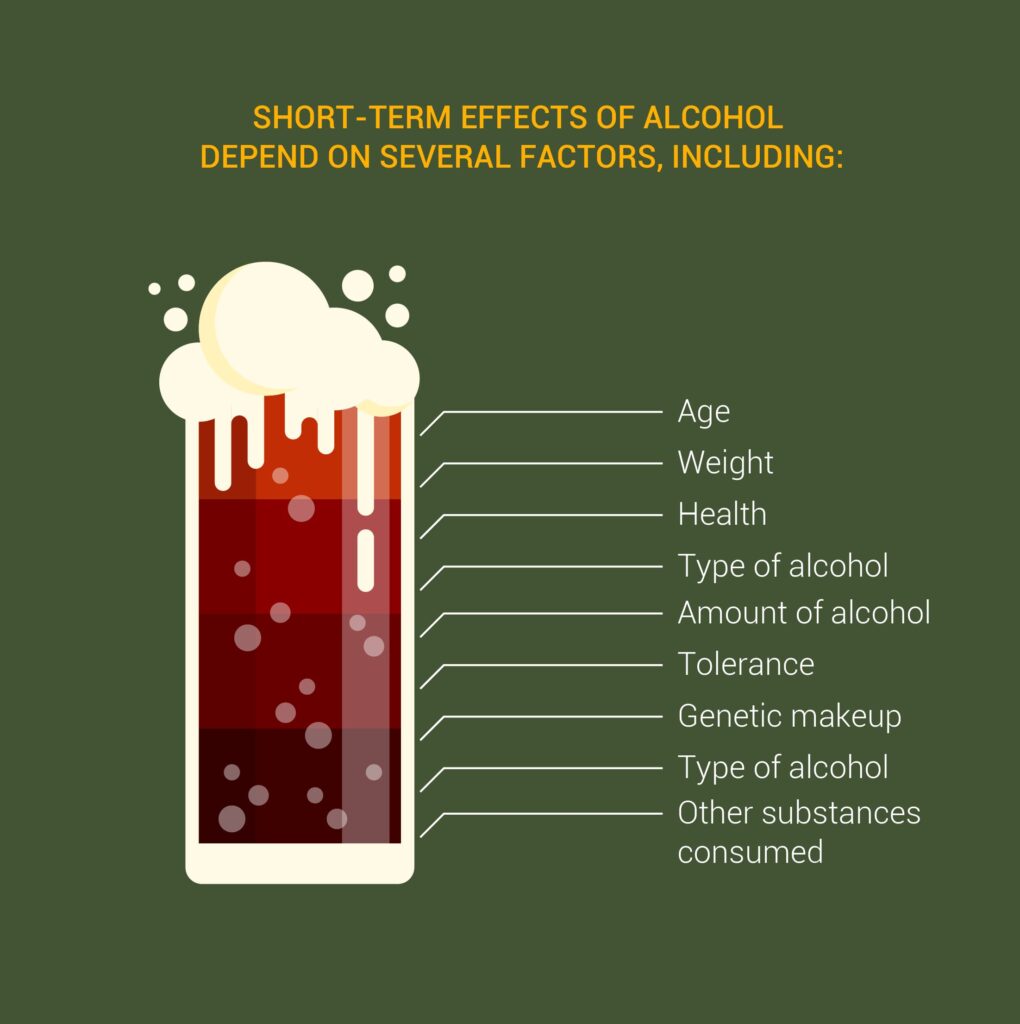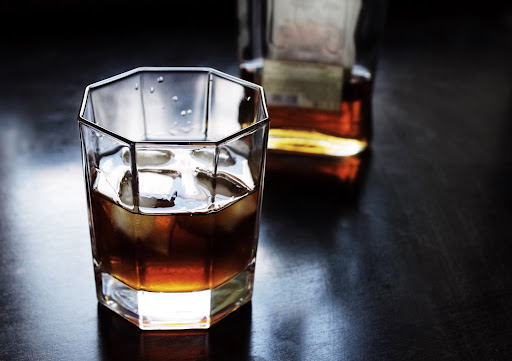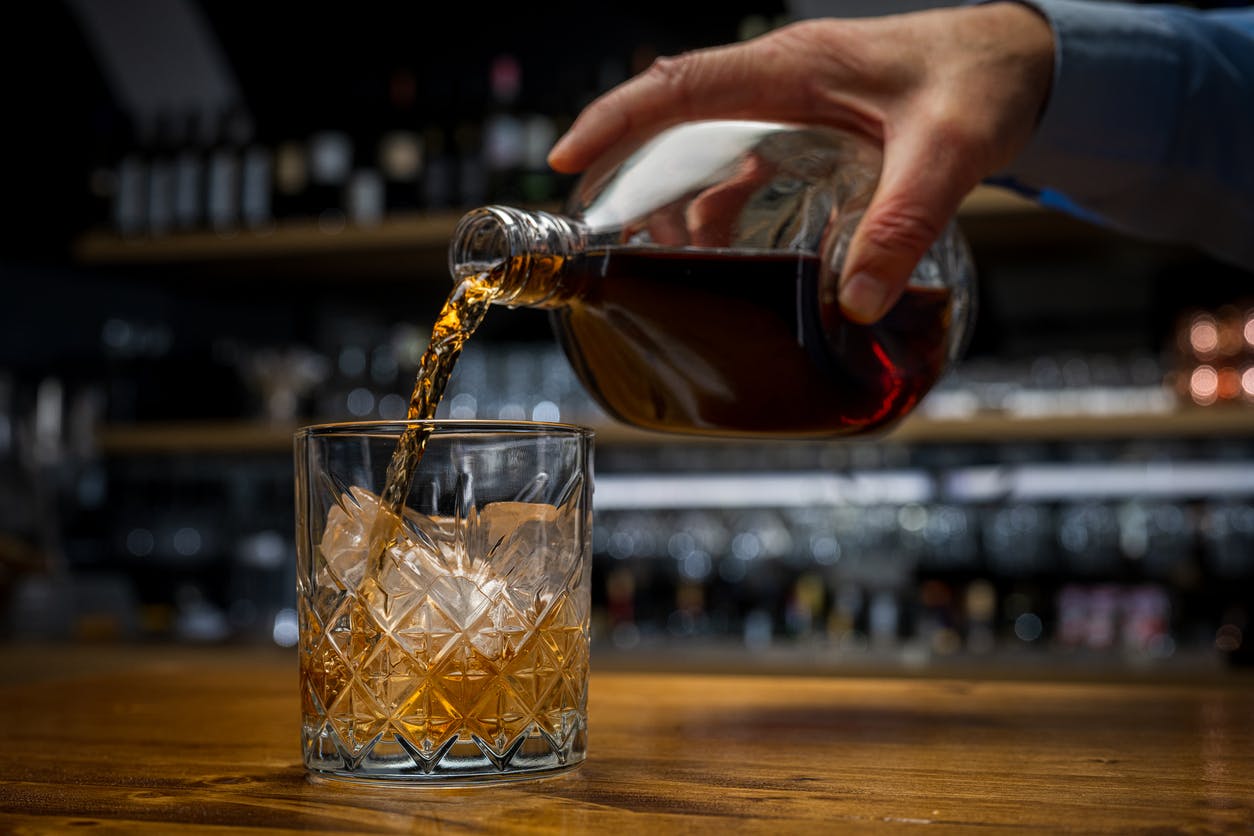Alcoholism: Helping People Get on the Road to Recovery
The National Institutes of Health defines alcohol use disorder (AUD) as a “chronic relapsing brain disease” in which a person compulsively drinks even in the face of adverse consequences. Also called alcohol abuse, alcoholism, and alcohol dependence, it is one of the most complex substance abuse disorders.
Alcohol use is so widely accepted in the U.S., it is practically the social norm and it’s difficult to know when a person has crossed the line from social drinking into an addiction.
According to the 2019 National Survey on Drug Use and Health:
- 85.6 percent of people ages 18 and older reported that they drank alcohol at some point in their lifetime
- 69.5 percent reported that they drank in the past year
But addiction is a very common, chronic, and progressive condition that can lead to serious social, familial, and physical health consequences.
This guide to alcohol abuse explains the disease and the treatment options available to help you overcome alcohol use disorder and achieve recovery.

What Is Alcohol?
Alcohol is a psychoactive substance produced by the fermentation of sugar, yeast, and starches. The alcohol in wine, beer, and liquor is ethanol, a central nervous system suppressant that affects every organ in the body.
When ingested, alcohol gets absorbed by the stomach and small intestine. It enters the bloodstream and is then processed in the liver. However, the liver can only metabolize a small amount of it at a time.
Drinking more than the liver can handle means that the rest of the alcohol flows throughout the body, affecting us in a variety of harmful ways.

Why Do People Drink Alcohol?
A person’s tendency to drink boils down to highly individualized factors.
Some of the most common reasons why people like drinking include:
- Fun: A desire to have fun is one of the main reasons people drink alcohol. Drinking small amounts makes some people feel happy, relaxed, and sociable.
- Stress Relief: It is a sedative and a relaxant which means its effects can be very welcome when a person is feeling overwhelmed with stress.
- Pleasurable Feelings: Drinking might offer a euphoric escape from work, relationships, boredom, or other problems they are trying to escape.
- Social Anxiety: Drinking helps people relax and lowers their inhibitions which often translates to people with social anxiety using alcohol as a crutch to help them feel comfortable in social situations.
- Trauma: Whether childhood trauma, sexual trauma, traumatic events like combat or car accidents, or something else, painful events can be incredibly hard to process and alcohol can be a quick fix to escape hard memories.
- Loneliness: When people don’t feel connected to others or part of a community, drinking can help them escape bad feelings.
- Grief: People who have experienced the loss of friends, family members, or loved ones often have a difficult time dealing with grief and booze becomes their coping mechanism.

Does Alcohol Have Any Health Benefits?
While alcohol use can wreak havoc on a person’s health, research shows that moderate consumption may also have some health benefits such as:
- Lowering the risk of cardiovascular disease in both men and women
- Some studies also found that gallstones and type 2 diabetes are less likely to occur in moderate drinkers than in non-drinkers
- Red wine is a source of resveratrol, a natural antioxidant that can improve damaged cells and reduce oxidative stress in the body
But this only tells part of the story. The emphasis in all these cases is on moderate drinking. Increasing intake to two or more drinks per day doesn’t just negate the positive effects of drinking — it immediately increases the risk of cardiovascular diseases, type 2 diabetes, high cholesterol, high blood pressure, and a host of other diseases.
Plus, the health benefits do not apply to anyone with any existing health problems or with even a moderate risk for alcohol abuse.

Effects of Alcohol Abuse
Drinking can cause several short-term effects immediately upon consumption. These effects depend on a variety of factors, such as:
- Age
- Weight
- Overall health
- Type of alcohol consumed
- Amount consumed
- Tolerance
- Genetic makeup
- Diet
- Other substances consumed

In general, short-term effects begin within 20 to 30 minutes of consuming it. These short-lived effects include:
- Elevated mood
- Feelings of euphoria
- Physical relaxation
- Slurred speech
- Slow reflexes
- Impaired motor skills
- Inability to concentrate
- Distorted vision or hearing
- Elevated blood pressure
- Rise in body temperature
- Lethargy
- Lowered inhibitions
These effects might not seem serious, and most people recover from them once the alcohol is eliminated from the body; however, what’s problematic is the cumulative effect of abusing alcohol over time.
Let’s take a closer look at how chronic and binge drinking affects the body long-term.
How Does Alcohol Affect the Body?
While having a glass of wine or a beer now and then isn’t a big deal for most people, drinking too much — on just one occasion or over time — can be very damaging to your health.
Some of the health complications arising from chronic alcohol abuse include:
1. Slowed Cognitive Functioning
Alcohol interferes with the brain’s neural pathways and can affect how the brain functions. Prolonged drinking can shrink the frontal lobes of your brain and can change mood, behavior, and coordination.
Drinking can also make it harder to think clearly and can cause memory impairment. It’s possible to wake up with no memory of what happened while you were drinking.
Chronic use can cause Wernicke-Korsakoff syndrome, a permanent brain disorder that affects memory.
2. Circulatory System Damage
Prolonged alcohol abuse or episodes of binge drinking can damage the heart and lungs. Drinking can cause stretching and drooping of the heart muscle, irregular heartbeat, stroke, and high blood pressure.
It can also cause difficulty pumping blood through the body, which makes it hard to absorb vitamins and minerals. This leads to anemia, a condition of low red blood cell counts that causes extreme fatigue.
3. Liver Problems
Heavy drinking places strain on the liver. It can lead to fatty liver, alcoholic hepatitis, and cirrhosis.
The liver helps break down and remove toxins from the body. But over time, heavy drinking interferes with this waste removal process.
It causes chronic inflammation in the liver, where scar tissue is formed and it eventually destroys the organ which is known as cirrhosis. This is known as cirrhosis.
Alcoholic liver disease can be fatal because it causes toxic waste to accrue in the body and a host of other problems.

4. Endocrine Damage
Too much alcohol can cause the pancreas to produce an abnormal amount of digestive enzymes which causes severely painful inflammation called pancreatitis. This can turn into a long-term situation and cause serious complications that make it hard to digest food.
The pancreas also regulates insulin in the body. When the pancreas and liver are damaged, it can easily lead to low blood sugar, or hypoglycemia, or too much sugar, hyperglycemia.
Both are serious conditions and can cause complications and side effects related to diabetes. Drinking is very dangerous for people with diabetes or hypoglycemia.
5. Digestive Problems
Drinking can cause damage to tissues in the digestive tract and prevent the intestines from being able to absorb necessary nutrients, leading to malnutrition.
Heavy drinking can also cause:
- Bloating
- Excess gas
- Diarrhea
- Painful stools
- Abdomen pain
Alcohol can cause ulcers and dehydration, which can lead to internal bleeding and hemorrhoids, respectively.
6. Reproductive Health
Drinking heavily is known to cause erectile dysfunction in men and problems with menstruation in women which can sometimes lead to infertility.
Drinking while pregnant can pose great harm to both women and their unborn children, including the risk of miscarriage, stillbirth, and fetal alcohol syndrome disorders. It also puts babies at risk of developing learning difficulties, long-term health issues, and physical abnormalities.
7. Elevated Risks of Cancer
The National Cancer Institute also lists alcoholic beverages as a known human carcinogen.
The more a person drinks, the higher the risk of developing alcohol-related cancer. Even people who have only one drink a day have a slightly increased risk of some cancers.
Heavy drinkers are at risk of developing cancer of the following:
- Mouth
- Throat
- Esophagus
- Colon
- Liver
8. Central Nervous System Damage
Alcohol is a central nervous system suppressant that slows down many critical functions in your body.
It can cause the following:
- Slurred speech
- Impaired motor coordination
- Loss of equilibrium
- Neuropathy
- Numbness and tingling in the hands and feet
These side effects can make driving a vehicle extremely dangerous.
Alcohol also makes it hard to create short- and long-term memories and to make rational choices. Frontal lobe damage can occur over time, impairing the ability to exhibit emotional control and sound judgment.
9. Weakened Immunity
Excess alcohol can also weaken the immune system which makes it much more likely to contract diseases like pneumonia and tuberculosis than those who don’t drink.

When Does Drinking Become a Problem?
Many adults can drink in moderation, meaning up to two drinks a day for men and one drink a day for women.
A drink is equal to 1.5 ounces of spirits, five ounces of wine or 12 ounces of beer. However, pushing the limits on moderation can easily lead to abuse and dependence. AUD or alcohol abuse can only be diagnosed by a medical or mental health professional.
As found on the National Institute on Alcohol Abuse and Alcoholism (NIAAA) website, the American Psychiatric Association (APA) outlines basic criteria for mild, moderate, and severe AUD.
The APA’s diagnostic signs of alcohol abuse include:
- Being unable to stop drinking or control alcohol intake despite trying
- Drinking more frequently or drinking more than intended
- Spending significant time seeking alcohol, drinking, and recovering
- Cravings
- Inability to fulfill home, work, and school obligations
- Spending less time at work, school, or social activities because of drinking
- Drinking when it is physically dangerous to do so, like when driving a car
- Drinking despite physical or psychological problems related to alcohol use
- Developing a tolerance
- Experiencing withdrawal symptoms upon cutting back

Alcohol abuse is the step before alcoholism, or dependence and is a pattern of drinking that causes significant and recurrent adverse consequences.
According to the NIAAA, a 2019 survey revealed that 5.6 percent of adults in the United States aged 18 and older had alcohol use disorder (AUD), or roughly 14.1 million people.
Alcohol Poisoning and Overdose
Drinking too much can cause serious health complications, is extremely dangerous, and can result in death. If you suspect someone has alcohol poisoning, contact emergency medical professionals immediately.
Signs that someone may have alcohol poisoning or has overdosed include:
- Vomiting
- Passing out
- Inability to walk
- Confusion
- Lack of reflexes
- Decreased heart rate or pulse
- Slowed breathing
- Hypothermia
- Pale or bluish skin, especially around the lips
- Seizures
Withdrawal Symptoms
If a person has been drinking heavily for some time, halting use or cutting down on the amount can cause dangerous or even fatal symptoms. Problem drinkers should never attempt to stop drinking without the help of medical professionals.
Symptoms of alcohol withdrawal include:
- Nausea
- Vomiting
- Profuse sweating
- Anxiety
- Irritability
- Disorientation
- Sensitivity to light and noise
- Headache
- Insomnia
- Depression
- Panic attacks
- Vivid nightmares
- Paranoia
- Tremors
- Delirium Tremens
- Hallucinations
- Delusions
- High blood pressure
- Seizures
- Loss of consciousness
No one should endure severe symptoms of alcohol withdrawal without help. Call Zinnia Health at (855) 430-9439 to learn more.
What Causes Alcohol Abuse?
Alcohol abuse and disorders happen for a variety of reasons including:
- A problematic combination of traits like impulsiveness and low self-esteem
- Boredom
- Self-medication, or avoiding emotional/psychological problems
- A result of childhood trauma, poverty, or domestic abuse
- Genetic factors
- Children of parents with AUD are two to six times more likely than others to develop their own AUD
- People with relatives with AUD are also more likely to develop an addiction
- Easy access to or spending time with people who abuse substances
- Problematic drinking can happen in teenage years when developmental changes are happening
- Engaging in risky behaviors when young make people more prone to alcoholism when they are older
- Low self-esteem, stress, personality and mood disorders or other mental disorders, and a person’s social support network

Alcohol Addiction Treatment
Deciding to ask for help is one of the best decisions a person can make in their life. If you’re ready to admit you have a drinking problem, you’ve already taken the most important step. It takes extraordinary courage to admit that you’re ready to change your life and it’s time to reach out for help.
Treatment for alcohol abuse can look different for different people: at-home recovery or going to alcohol rehab. Recovering from any kind of substance abuse is much easier and more likely to be successful if you have support, and a treatment center can provide medical assistance and people to lean on throughout the process.

1. Detox
The first stage in recovery is alcohol detox. If the addiction is severe, it’s critical to have the help of medical professionals because withdrawal can be seriously uncomfortable and even deadly.
When you no longer drink, your body will react negatively because of its dependence. Treatment centers can help ease your symptoms and pain with medication-assisted treatment.
After detox, a person has several different options.
2. Inpatient Rehab
Inpatient rehab involves staying at a facility where you have access to 24-hour/day supervised medical care and support. You remain in a safe, controlled environment for a determined amount of time without the temptation to drink.
3. Outpatient Programs
Outpatient programs provide rehabilitative support on a daily or weekly basis and you can choose to attend anywhere from 5 to 40 hours of treatment each week. The main difference is that you can stay at home during treatment instead of living at a facility.
4. Individual Therapy
Therapy is highly recommended for people in early recovery. It involves working with a counselor on different aspects of your addiction.
- Cognitive Behavioral:This approach focuses on identifying your triggers and finding ways to avoid situations and behaviors that increase your risk of relapse.
- Matrix Model: This combines different approaches such as cognitive-behavioral therapy, family or marriage counseling, group therapy, 12-step programs, and outpatient rehab.
- Contingency Management: This approach works by encouraging behaviors that promote sobriety with tangible rewards.
- Motivational Interviewing:This focuses on helping you stay motivated during treatment and move through the recovery process at your own pace.

5. Group Therapy
Group therapy is a chance to meet with other people who are experiencing similar alcohol problems and a way to learn healthy coping mechanisms from others.
It is also a great way to continue talking about your addiction and benefitting from lessons others have learned while treating alcoholism.
6. Attending 12-Step Groups
12-step groups are programs that focus on abstinence, such as AA and NA. They are excellent forms of social support and can offer a way to make new, sober friends.
7. Medication
It’s possible that you and your treatment provider will decide that medication should be a part of your recovery plan to prevent withdrawal symptoms.
Some medications help curb cravings, others help alleviate withdrawal symptoms in the early stages of recovery, and more help address any co-occurring disorders, such as depression or anxiety.
Seeking Treatment
Alcohol use disorder is a very personal condition that require a personalized solution.
If you are ready to seek treatment for alcohol abuse, call the Zinnia Health free alcohol addiction hotline at (855) 430-9439 to regain control of your life.
Related Articles
- Campral for Alcohol Abuse and Addiction
- How to Help an Alcoholic Family Member
- How Alcohol Affects Women Differently Than Men

